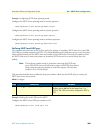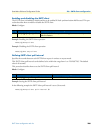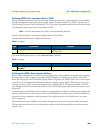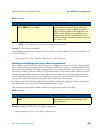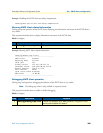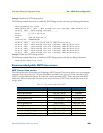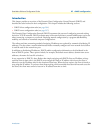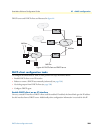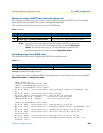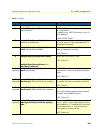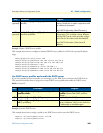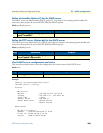
Introduction 293
SmartWare Software Configuration Guide 27 • DHCP configuration
Introduction
This chapter provides an overview of the Dynamic Host Configuration Control Protocol (DHCP) and
describes the tasks involved in their configuration. This chapter includes the following sections:
• DHCP-client configuration tasks (see page 294)
• DHCP-server configuration tasks (see page 297)
The Dynamic Host Configuration Protocol (DHCP) automates the process of configuring new and existing
devices on TCP/IP networks. DHCP performs many of the same functions a network administrator carries out
when connecting a computer to a network. Replacing manual configuration by a program adds flexibility,
mobility, and control to networked computer configurations.
The tedious and time-consuming method of assigning IP addresses was replaced by automatic distributing IP
addresses. The days when a network administrator had to manually configure each new network device before
it could be used on the network are past.
In addition to distributing IP addresses, DHCP enables configuration information to be distributed in the
form of DHCP options. These options include, for example, the default router address, domain name server
addresses, the name of a boot file to load etc.
A new expression in DHCP is lease. Rather than simply assigning each DHCP-client an IP address to keep
until the client is done with it, the DHCP-server assigns the client an IP address with a lease; the client is
allowed to use the IP address only for the duration of that lease. When the lease expires, the client is forced to
stop using that IP address. To prevent a lease from expiring, which essentially shuts down all network access for
the client, the client must renew its lease on its IP address from time to time.



